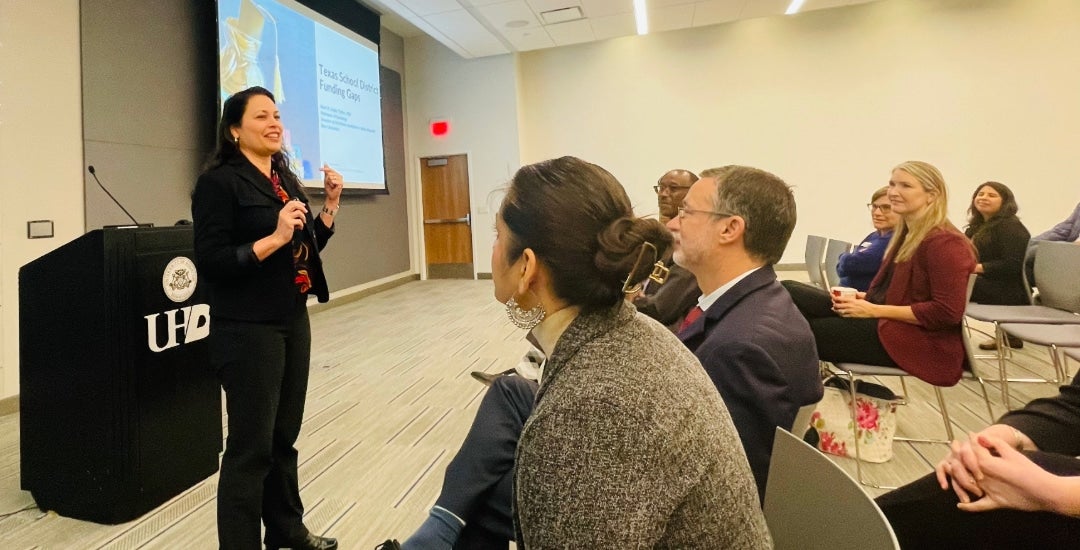“A large majority of our population in Harris County believes that our schools need significantly more money,” Kinder Institute Director Ruth N. López Turley said Dec. 4. “But how much more funding do our school districts actually need?”
Turley was the featured speaker at “Investing in our Schools: A Case for State Funding for School Districts” at the University of Houston-Downtown. The event was sponsored by the Houston 2036 Taskforce on Equity and the Houston/Gulf Coast chapter of the American Leadership Forum.
Turley’s research published by the Kinder Institute in August found that 73% of Texas school districts are underfunded, while 17% — which represents about 1.8 million students — are severely underfunded, meaning they have funding gaps that exceed 40% of their needs. The analysis, “Texas School District Funding Gaps,” explored the relationship between student achievement ratings from the Texas Education Agency and the School Finance Indicators Database, which provides estimates of funding gaps based on the difference between how much school districts spend and how much they need.
Turley and co-author Brad Selsberg, a Kinder Institute research analyst, were able to show that funding gaps were in fact a significant contributing factor in school district performance. They found that severely underfunded districts are most likely to have a TEA student achievement rating of C or lower.
“Ideally, I would love to see us close all the funding gaps for all school districts,” Turley said. “But we have limited resources and have to be strategic about where we invest our money. Our research shows that reducing funding gaps in Texas’ 171 severely underfunded school districts would significantly improve their chances of reaching an A or B student achievement rating.”
In the Houston area, the Aldine, Alief, Channelview, Galena Park, Houston, Pasadena, Sheldon, Spring Branch, Spring and Waller independent school districts are considered severely underfunded.
“The needs are extremely different, and a lot of that is a result of our school districts being highly segregated by race, ethnicity or economic status,” Turley said. “We have to take into consideration local labor costs, because they’re by far the largest expenditure for school districts, as well as the student composition. There are different costs associated with different kinds of students. For example, English learners and special needs students cost more to educate.”
Turley estimated the cost of reducing the gaps for severely underfunded districts from 40% or more to 35% to help them raise their student performance ratings would be about $9.3 billion in additional state funding annually. That would represent a significant increase: In fiscal year 2023, Texas spent about $66.8 billion on public schools, including from state, local and federal sources, according to the TEA.
Such an investment, however, could have far-reaching implications such as strengthening the economy and workforce and increasing tax revenue.
The Texas Legislature’s next regular session begins in January.
“It’s up to our decision-makers, and this has to be supported by people on both sides of the political aisle,” Turley said. “As long as it’s a route that’s effective, the ask is to help our most severely underfunded school districts have a chance.”



